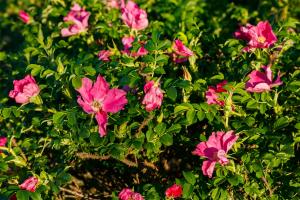When to Plant Pear Trees in Alabama
Pear trees are a great addition to any garden or orchard, providing delicious fruit for pies and preserves, as well as a stunning landscape feature. But planting a pear tree in Alabama can be a bit tricky, as the weather conditions and temperature changes in this area can affect the tree's growth and fruit production. In this article, we'll discuss the best time to plant pear trees in Alabama and how to care for them to ensure a bountiful harvest.
The Best Time to Plant Pear Trees in Alabama
The best time to plant pear trees in Alabama is during the dormant season, which is generally from late fall to early spring. The cooler weather allows the tree to establish its roots without being exposed to excessive heat, which can cause stress and hinder growth. Ideally, pear trees should be planted in late fall or early winter, just before the first frost. This timing allows the tree to establish roots before the soil freezes and becomes too hard to work with.
However, if you missed the window to plant your pear tree in the fall, you can still plant it in the spring. Just make sure to plant it as early as possible, before the weather becomes too warm, and water it well to help it establish its roots.
Choosing the Right Location
When planting a pear tree in Alabama, it's important to choose the right location. Pear trees require full sun to thrive, so choose a spot in your garden or orchard that receives at least six to eight hours of direct sunlight per day. The soil should also be well-drained and fertile, as pear trees prefer soil that is slightly acidic, with a pH range of 6.0 to 6.5.
Avoid planting your pear tree in a low spot in your garden, where water tends to collect, as this can cause root rot and other diseases. Also, make sure to plant your tree away from any buildings, fences, or other objects that may shade it from the sun or create an obstruction to its growth.
Planting and Caring for Your Pear Tree
When planting your pear tree, dig a hole that is twice as wide and just as deep as the tree's root ball. Make sure to plant the tree so that the graft union (a slight bump in the trunk where the rootstock and scion were joined together) is above the soil level, and backfill the hole with a mixture of soil and organic matter, such as compost or aged manure. Water the tree well after planting and mulch around the base to help retain moisture and suppress weeds.
To care for your pear tree, make sure to water it regularly, especially during the hot summer months, and fertilize it with a balanced fertilizer in the spring. You should also prune your tree annually to shape it and remove any dead or diseased wood.
In Conclusion
Planting a pear tree in Alabama can be a rewarding experience, but it requires careful consideration of the planting location, timing, and care. By following the guidelines in this article, you can ensure that your tree will thrive and provide you with delicious fruit for years to come.

 how many times do yo...
how many times do yo... how many planted tre...
how many planted tre... how many pine trees ...
how many pine trees ... how many pecan trees...
how many pecan trees... how many plants comp...
how many plants comp... how many plants can ...
how many plants can ... how many plants and ...
how many plants and ... how many pepper plan...
how many pepper plan...





























